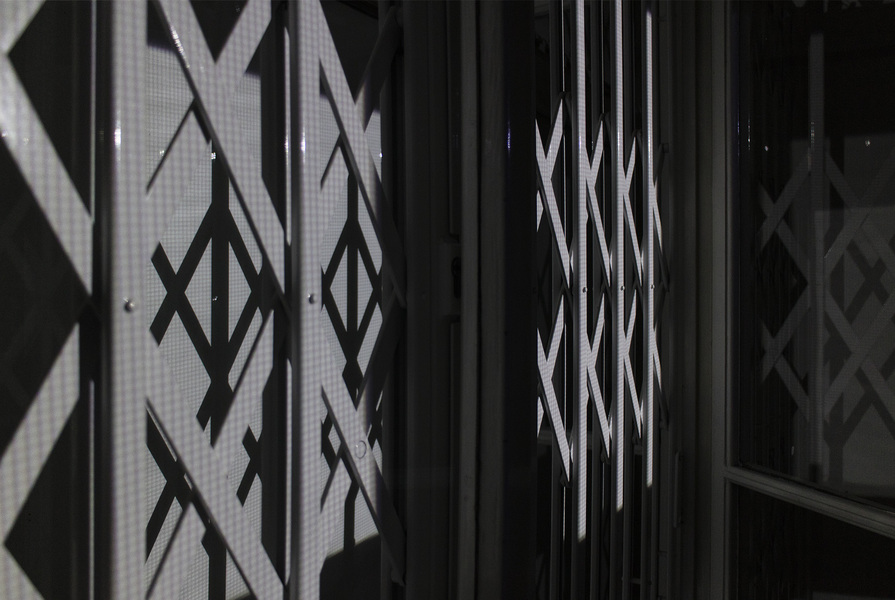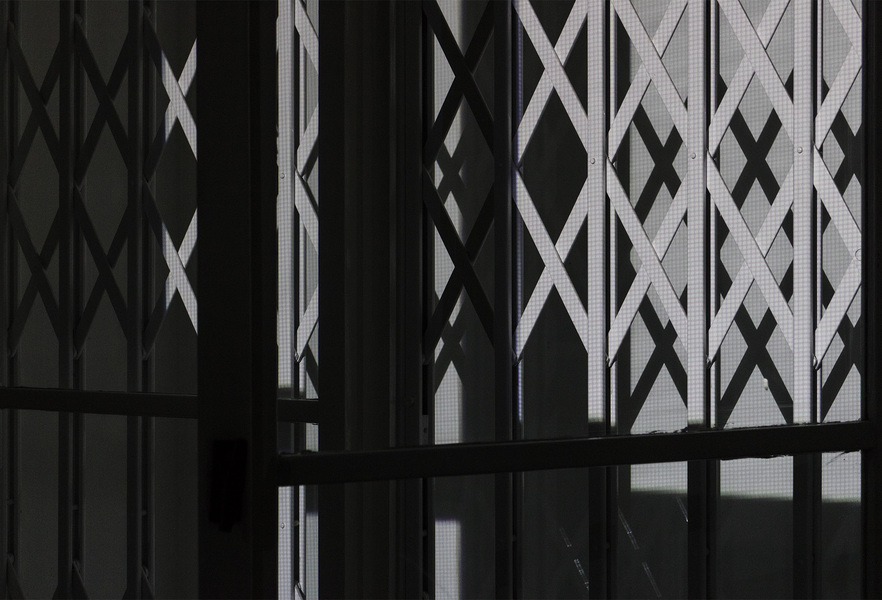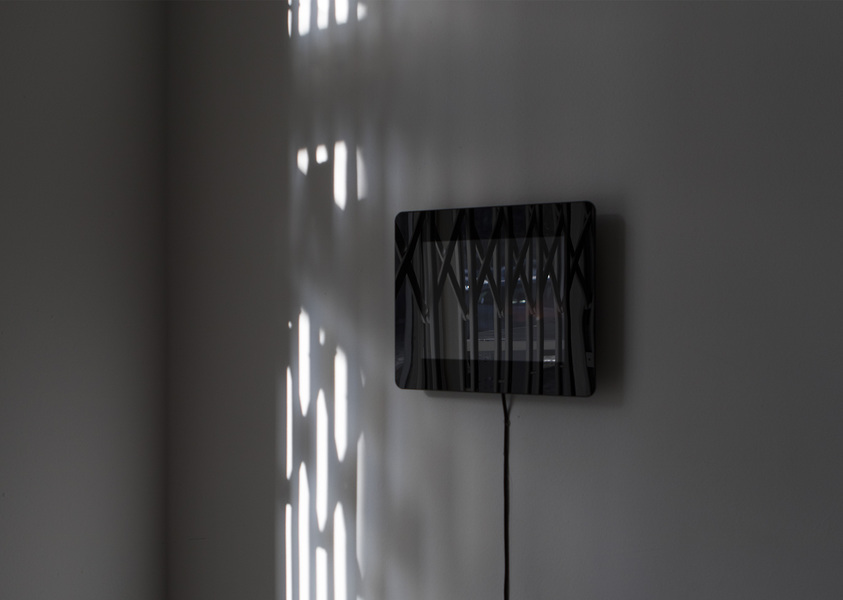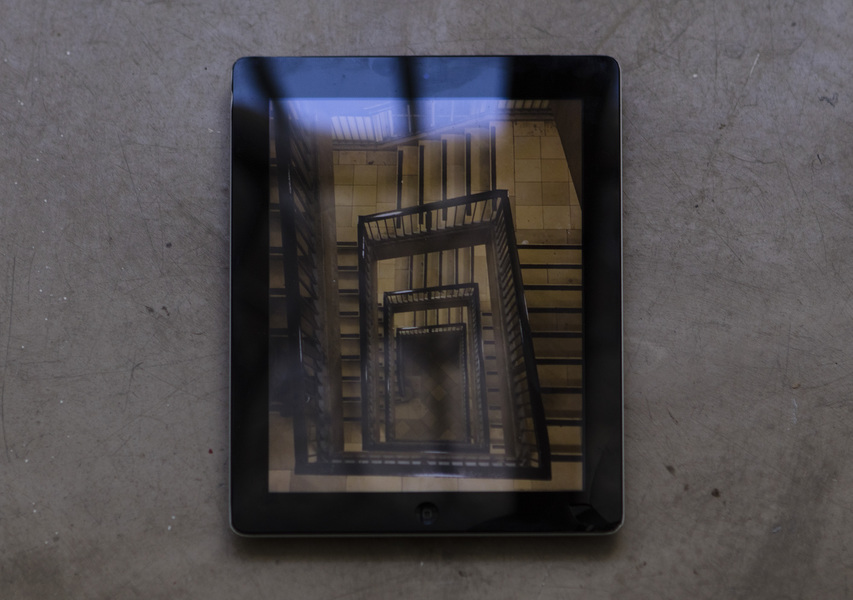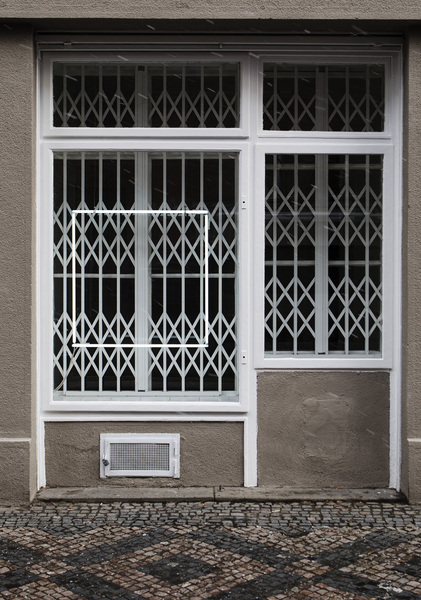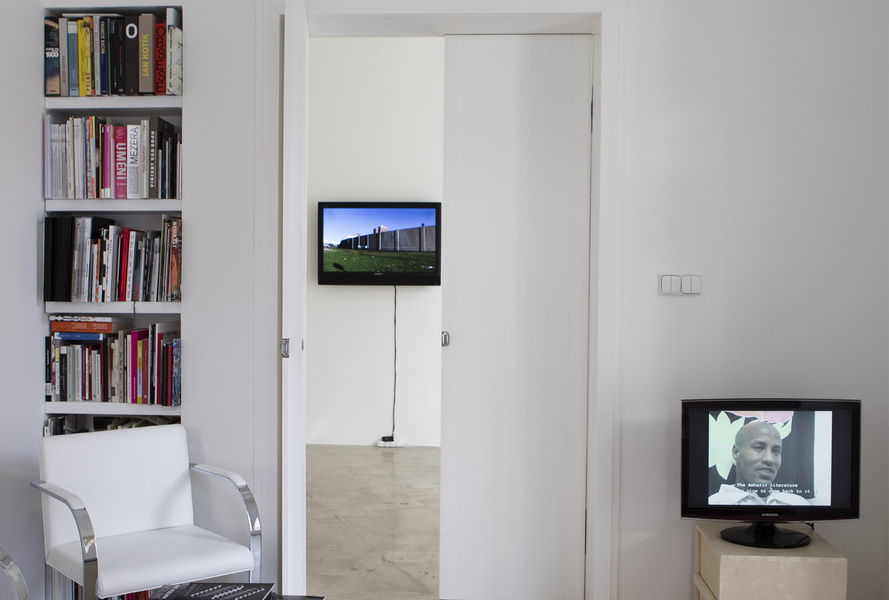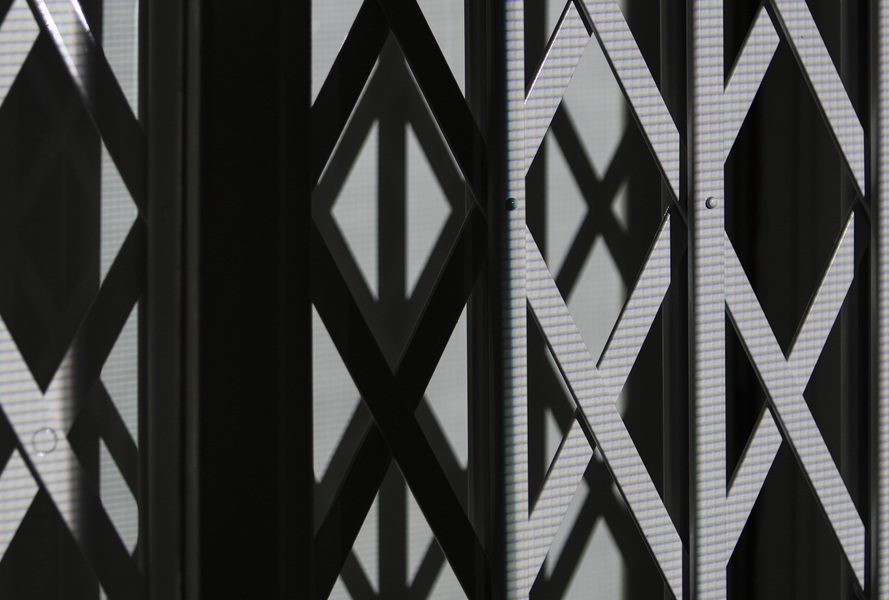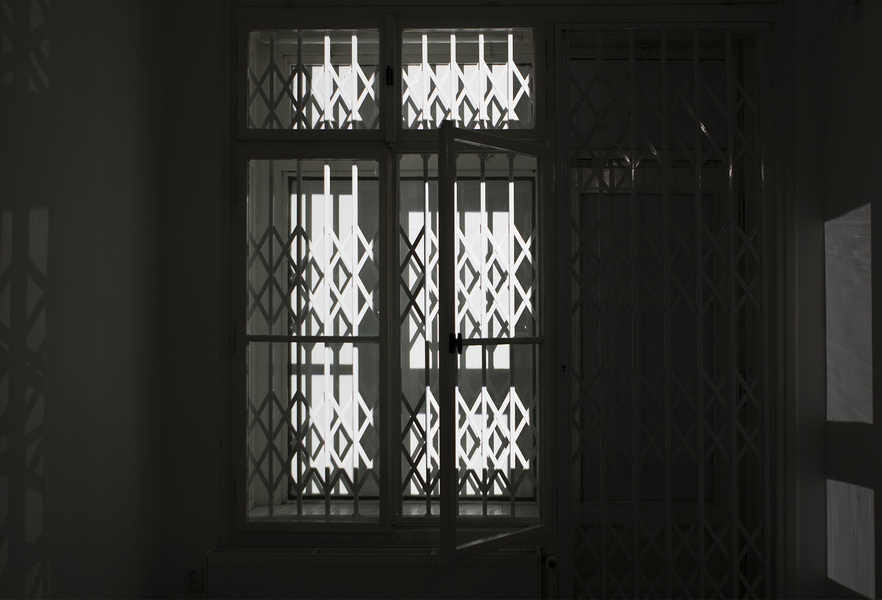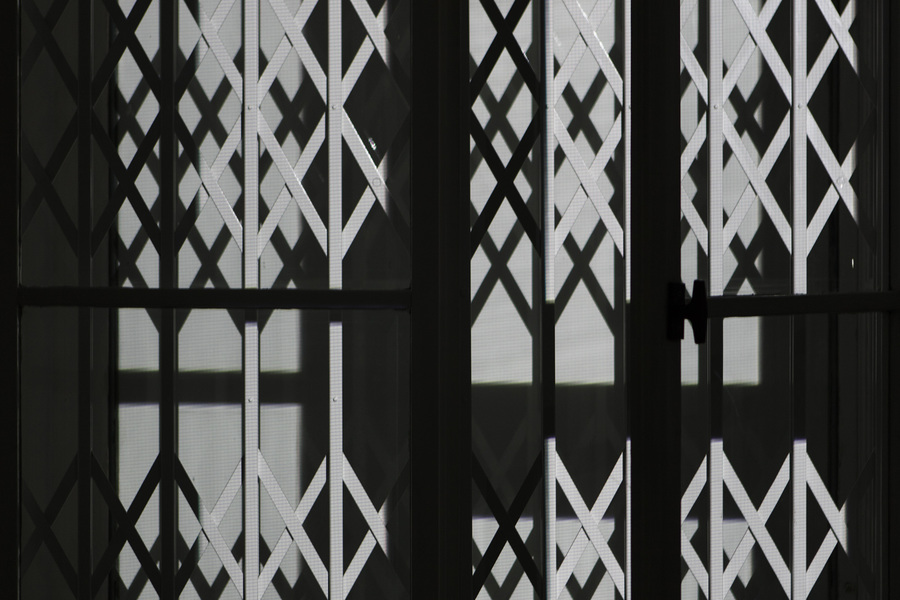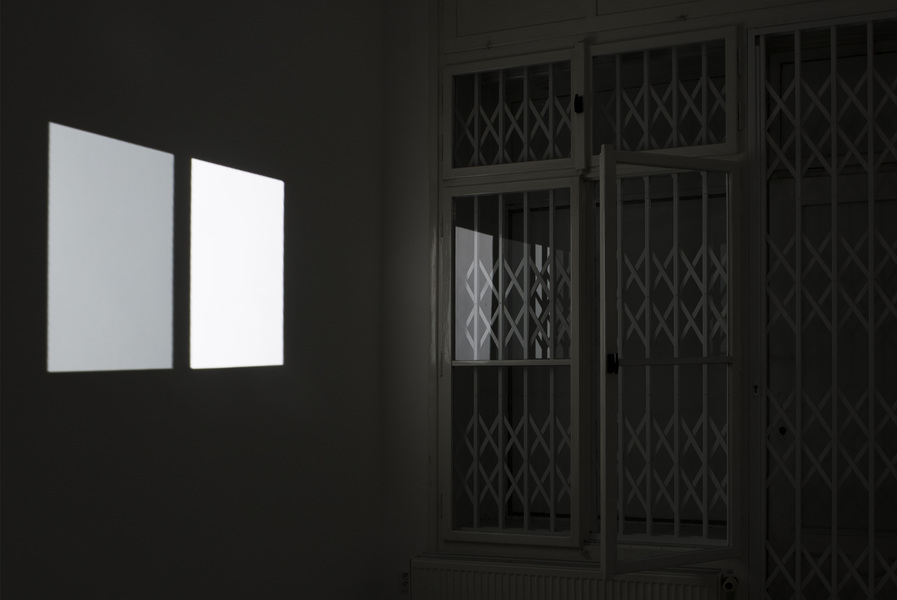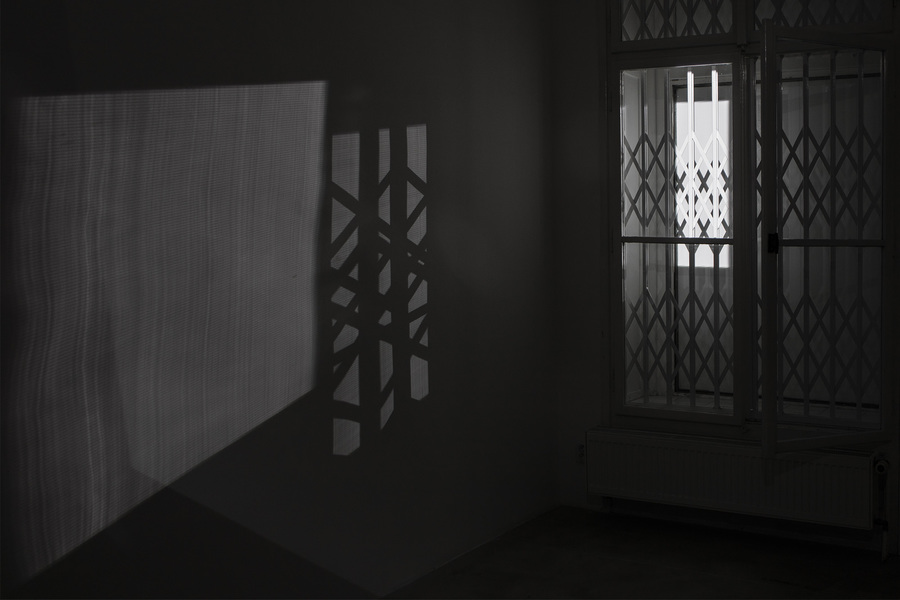Drdova Gallery is pleased to present the first solo exhibition of Jan Tichý in the Czech Republic. The Mříž exhibition is a collection of earlier as well as new and site-specific works that manifest Tichý’s approach to media such as photography, video, projection and neon while giving a powerful account of the state of our society and historical events in a both very explicit and abstracting form.
In his installations, Jan Tichý makes characteristic use of the video projector for a light projection, creating both physical and mental spaces in which he explores themes of concealment and obscurity, the seen and the unseen. His concept of space and light is based on historical, sociological, architectonic as well as artistic connotations relating to the exhibition space, its spatial aesthetic and possible socio-political implications.
The architectonic concept of the exhibition changed the spatial organization of the gallery and is based on the mutual interconnection and merging of the basic elements of the artist’s work. The viewers can perceive architecture, light and sound in varying transformation and intensity in each part of the gallery. The physical presence of the projection of bars (mříž) within the space in various light conditions – daylight and artificial light, light projection, neon lights and street lights – makes a different impression depending on the time of day. The element of sound, or rather human voices speaking in the videos, completes the atmosphere surrounding the viewers, giving its testimony with great urgency.
The exhibition is opened by the video Changing Chicago (County Prison), 2012. The work is part of a series of nine videos in which Tichý explores his adoptive city. He was originally invited to react to the collection of photographs of the Museum of Contemporary Photography in Chicago entitled Changing Chicago from the second half of the 1980s; back then, three dozen photographers documented the everyday life of the city and its citizens. A quarter of a century later, Tichý holds a dialog with these artists, capturing his contemporary Chicago. He does so using a static camera observing various situations; however, unlike Breson’s photography which looks for a particular decisive moment, he rather extends the given moment by giving it more time.
The video from the series Pictures (2007) from night-time Tel Aviv, too, captures the development of a certain moment lasting several minutes. The city situation is charged with uncertain suspense, as it is not clear whether we are witnessing an event that has just come to an end or expecting something new to begin.
The photograph Landing (2011), capturing a man on the runway navigating an airplane by means of light rods, is a personified moment of arrival or departure. The work is presented on a screen which is an essential medium of digital photography.
In the central part of the gallery, a space was created where two works are separated by window bars (mříž). On a tablet on the floor, the staircase of a refugee camp in Berlin is spiraling and people are going up and down. The events captured in the video Lágr (2016), made in the course of the past months when the artist was in Germany, again take place beyond a particular moment. The indistinct sound of human voices, in Arabic, fills the space just like the language of the neon light.
Human language and the current refugee crisis with its wider and historical connotations have become the subject of other works created by Tichý for his previous exhibitions in Berlin and Osnabrück. The triangle-shaped neon piece entitled German Nature (2016) shows the multitude of languages of more than a million refugees in the German territory.
The square-shaped white neon piece Czech Nature (2017), placed in the window of a Prague gallery, reacts to the constant update of the word “refugees” in the search engine of the online version of a local daily. Its light goes on and off according to the impulses it receives from the translation of the read words of often negative or even hateful article comments juxtaposed by the search engine.
The work’s title alludes to the neon of American artist Bruce Nauman Human Nature / Life Death (1983) installed in the window of the Chicago Cultural Center in the 1990s. Before the German and Czech neon, Tichý originally created the circular Chicago Nature (after Nauman), 2014 and New York Nature (after Nauman), 2016, which respond to the local police transmissions. Unlike its predecessors, the Prague neon is the only one to work in both directions. It physically fills both the gallery space and the public space depending on the changing daylight. In the course of time, the intensity of the light impulses increases to such a degree that it becomes unbearable.
The site-specific Installation No. 33 (2017) activates the space by a light projection. All the windows in the back part of the gallery are blacked out. The light of the projector searches the dark space and modulates it through the reflections of window panes and bars (mříž), observing the shapes of what is inside. Digital light is decomposed. Space, time and movement condition each other, thus creating singularity.
Tichý’s reflections on space and light contain connotations of the heritage of the Czech avant-garde in the person of Zdeněk Pešánek, who preceded his more famous contemporaries, such as László Moholy-Nagy and Man Ray, by his solitary and unique works.
The architectonic element of the window, both in its physical and abstract form, is present in all parts of the exhibition. The window becomes a means to express what is here and there, inside and outside; thanks to its function, it brings both light and time to the space.
The only piece of gallery lighting in the entire exhibition is the fluorescent lamp in the window of the office, which works as a postscript in this case. The video Cage (2002) complements the theme of the exhibition. It is a result of Tichý’s collaboration with a group of Ethiopian Jews living in Israel. Hung on the wall, three photographs made in December 1989 in East Berlin capture the moment when Tichý first crossed the border to the West.
Jan Tichý (1974) was born in Prague. In the 1990s, he studied political science at the Hebrew University of Jerusalem and photography at the Musrara School of Art and Society, and later at Bezalel Academy of Art and Design in Tel Aviv, Israel. In 2007, he moved to Chicago and continued his studies at the School of the Art Institute of Chicago, where he currently works as assistant professor in the studios of photography, art and technology.
In the last year, Tichý held several solo exhibitions in the United States; at SBMA in Santa Barbara, Hyde Park Art Center in Chicago, Fridman Gallery in New York; and in Europe; at Galerie Kornfeld in Berlin and Kunsthalle Osnabrück, Germany. In the past years, he has exhibited his work at a number of institutions, such as the Museum of Contemporary Art, Chicago, CCA Tel Aviv, Tel Aviv Museum of Art and Wadsworth Atheneum Museum of Art.
His work is included in collections of institutions such as the Museum of Modern Art, New York; The Israel Museum, Jerusalem; Magasin 3 Stockholm Konsthall; MoBY – Museum of Contemporary Art, Bat Yam and Spertus Museum, Chicago.

